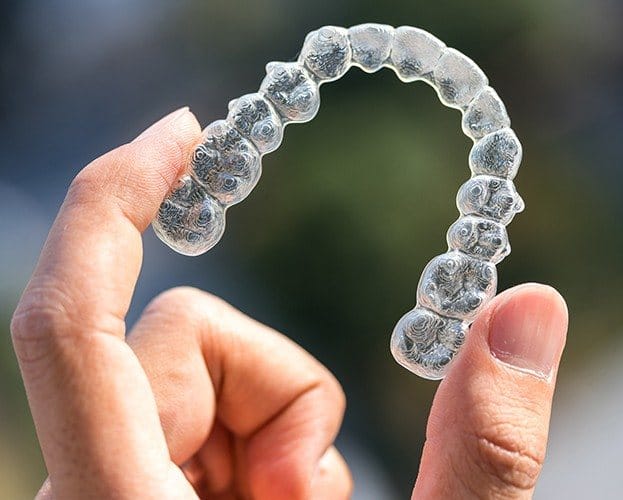Orthodontics – Leesburg, VA
Straighter Teeth
without Metal Braces
Millions of Americans would love to straighten their teeth, but there is just one problem: they aren’t willing to spend years in metal braces to do it. Thankfully, at All Smiles Leesburg, you don’t have to thanks to clear aligners. With them, you can enjoy all of the benefits of orthodontic treatment without the drawbacks of noticeable brackets and wires. Think you or your teen could benefit from clear aligners? Schedule a consultation to learn more today about options for orthodontics in Leesburg, VA.
Why Choose All Smiles Leesburg for Orthodontics?
- Custom Treatment Plans for Each Patient
-
Friendly & Highly
Skilled Dentist - Convenient Location with Plenty of Parking
Invisalign® Clear Braces

Invisalign uses a progressive series of plastic aligners that fit snugly over the teeth to gradually shift them into their ideal positions. When worn, the aligners are practically invisible, and the smooth plastic feels great against the gums and lips. Plus, a patient can take their aligners off whenever they want, meaning there are no diet restrictions with Invisalign. The average treatment time ranges from 12-18 months, but for minor cases, they can often be completed in as little as 6 months.
SureSmile Clear Aligners

SureSmile clear aligners offer many of the same advantages as Invisalign and basically work the same way, but there is one major difference: the cost. SureSmile tends to be a more affordable alternative compared to Invisalign while still offering consistent high-quality care. Plus, SureSmile enables Dr. McBryde to work with advanced software to plan and monitor every phase of your treatment to ensure the perfect result is all but guaranteed.
